In the immense Andean highlands is where you can find Lake Titicaca, the largest high-altitude lake in the world. Its waters are home to mysterious and fantastic floating Uros islands that contain a unique cultural wealth. Of course, this is because their predominantly indigenous inhabitants still maintain their traditions coming from many centuries ago, even before the Incas. That is why many scholars consider Lake Titicaca as the cradle of the Sun and the Inca Empire and the floating islands are proof of it. For this reason, together with the experts of Machu Travel Peru, we have prepared a small article about the recognized floating islands. Get to know about these artificial reed islands, one of the most popular tourist destinations in Peru.
All you need to know about visiting the floating islands of the Uros
- What are the Uros islands
- History of the Uros
- The Pukina Language
- The Uros culture
- How were made the Uros islands
- How to get to the Uros
- The Uros islands tours
What are the Uros islands?
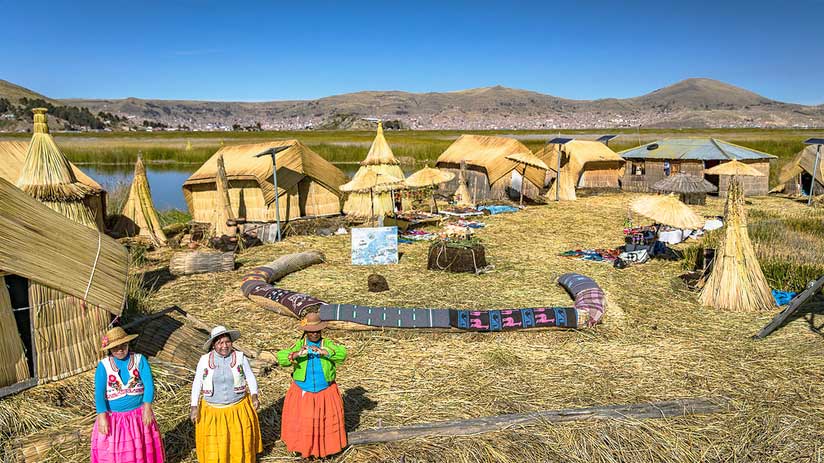
The Uros are several craft-floating islands made of aquatic reeds called Totora, where Andean inhabitants live since immemorial time, maintaining their costumes, traditions, and lifestyle, completely isolated from the world, floating eternally in the waters of Lake Titicaca.
The islands are around 60 to 70 in total. However, the quantity may change every year, because each island can merge with another or disappear and its inhabitants moving to another larger island and join other islanders.
Location and population
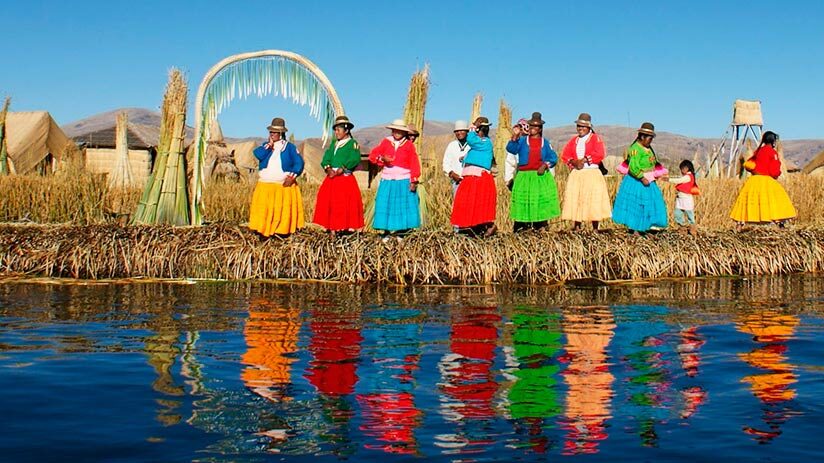
First of all, where is Lake Titicaca located? The Lake is located in the east of the quiet but privileged Puno city, in the south of Peru. This one is considered the Folk Capital of the Andean country for its colorful and varied folklore. Returning to Lake Titicaca also spans the neighboring country of Bolivia. In this sense, the Bolivian part occupies 40% of the Lake while the Peruvian part occupies 60%.
The Uros floating islands are located west of Titicaca Lake, and northwest of Puno, the closest land city to the islands (7 kilometers of distance in 30 minutes on a boat). Also, the islands are located over 12500 feet or 3810 m.a.s.l. Specifically, between the parallels 15° 50′ west longitude of the Greenwich meridian. Around 4,000 people are believed to live on the islands in the middle of Lake. Therefore, to get to the floating islands, we recommend that you plan your tour with a map of Lake Titicaca so that you can enjoy the adventure without problems on the route.
History of the Uros
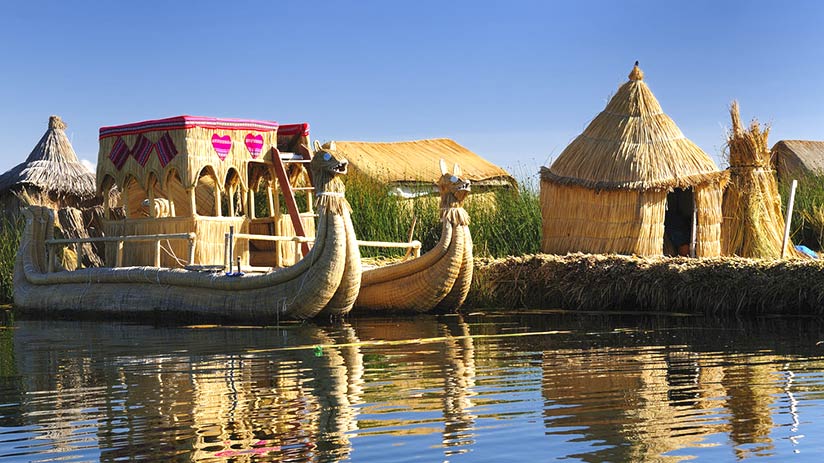
The Uros are believed to be direct descendants of the mysterious millennial culture called Pukara (1500 B.C) whose language was the Pukina and they inhabited the part of the southern altiplano shared by Peru and Bolivia. Therefore, many scholars affirm that the Uros were the first inhabitants of Lake Titicaca, even being ancestors of the Tiahuanaco culture (1400 B.C). According to history, the Uros were forced to build their floating islands and houses in the middle of Titicaca lake when the Inca Empire expanded their lands and threatened them. Being pacific people, the Uros didn’t want to fight, they just wanted to live in peace without threats or foreign influences. So retreating to the Lake to float in the middle of it, far from coasts, was a good way to defend themselves against the aggressive Collas and Incas.
In this form, having their mobile islands, if a threat arose, the Uros could move them to another safe part of the Lake, without any problem.
Collectors-hunters par excellence, they subsisted on fishing trout, and catfish in the lake and hunting the Kingfisher, in addition to domesticating the Andean partridge Ibis for the consumption of eggs. With the passage of time, they began to raise cattle on the shores and around the lake and to trade with the Aymaras, inhabitants of the area around the lake. In this way, their famous language was lost and being replaced by Aymara.
They lived like this until a devastating storm in 1986 forced them to call for help and float a little closer to the shores of the lake.
The Uros islands today
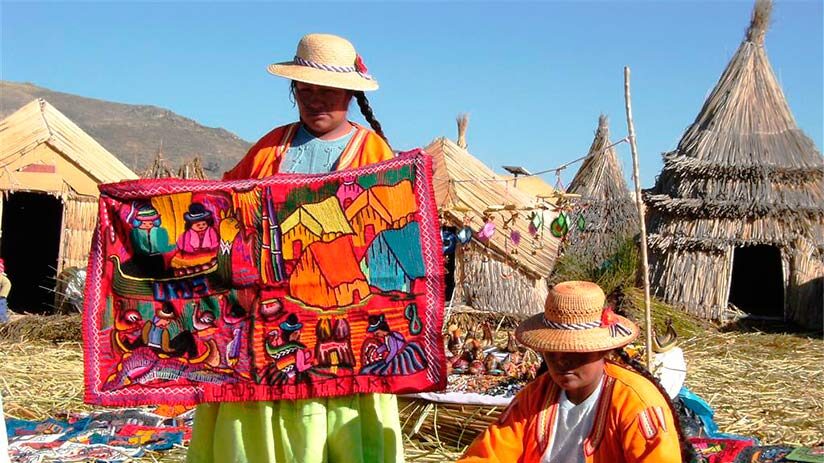
Now, technology and modernization came to the islands with solar panels that reduce the risk of fires from open flames, also been used these panels for recharging televisions, and radios, improving sanitary facilities, and other small appliances used by their inhabitants. Even, the Uros population has a little radio station where Andean music and interesting information about the islands are transmitted.
The children assist a local primary school located on one of the islands, besides having a mobile medical post located over another island. The High School and university periods have to be developed in the same Puno city, so the young people of the Uros must leave the islands, many of them not returning. In this form, the Uros population decreases year after year, leaving only older people who live from tourism, selling handicrafts of the islands. For this reason, if you see islanders trying to sell you their handicrafts, don’t bother and collaborate buying, even with a low-priced product, to their economy.
Pukina language
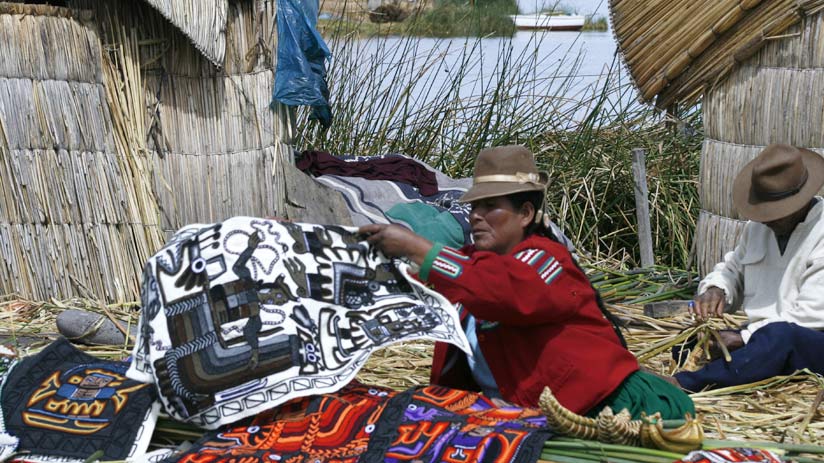
As we mentioned, the inhabitants of the Islands of Uros are descendants of one of the oldest cultures in America, the Pukaras (1500 B.C). And in the absence of written records, very little is known about this mysterious culture. For example, we know that the people of Uros spoke the mythical “Pukina” language, belonging to Pukaras. But this was lost to adopt another ancestral tongue called Aymara 500 years ago when they began to trade and interact with the Aymara people, inhabitants of the Titicaca lake borders.
At present, the Uros communicate in the native Aymara language. Despite having lost their mother tongue, they still maintain many other aspects of their original culture.
The Uros culture
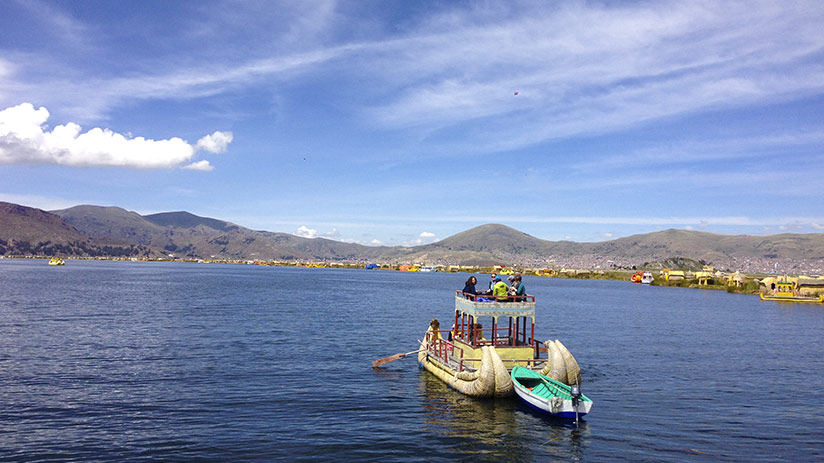
As its name indicate, the Uros are floating islands on Lake Titicaca. Just a few kilometers from Puno. Originally, the islands used to be in the middle of the Lake. But their inhabitants decided to translate themselves and rebuild their islands much closer to shore. This was due to a devastating storm that occurred in 1986. Since this year many businessmen of Puno began to think of additional forms of lodging for tourists people who came to Puno to visit the Islands like hotels in Lake Titicaca. In the same way, the Uros inhabitants began to work in Tourism, improving their islands with handicraft markets, toilets, and tourist boats, among others.
Returning to the subject, each island has a series of simple houses, although the main island has a watchtower. Small islands have even been created that function as latrines. Despite the traditional lifestyle that the inhabitants live, people are not against modern comforts. Some families own motorboats, solar panels, and other amenities. Even the main island is home to a radio station that plays music throughout the day. You can get to the islands of Uros from any point, although from Puno it is much easier to access.
How does a population of floating islands eat? This is an important question that has an answer in the same Totora reeds. The Uros Island inhabitants feed through the soft white part of the same Totora that provides them with nutrients. These even help them avoid some diseases like rheumatism and arthritis. On the other hand, they have lived a self-sufficient lifestyle; fishing catfish and trout on the Lake, the hunt of kingfishers, and Ibis breeding for egg consumption are their basic sources of food and wealth, even a few people have cattle that graze on the border of the Lake or the same floating island.
How were made the Uros islands
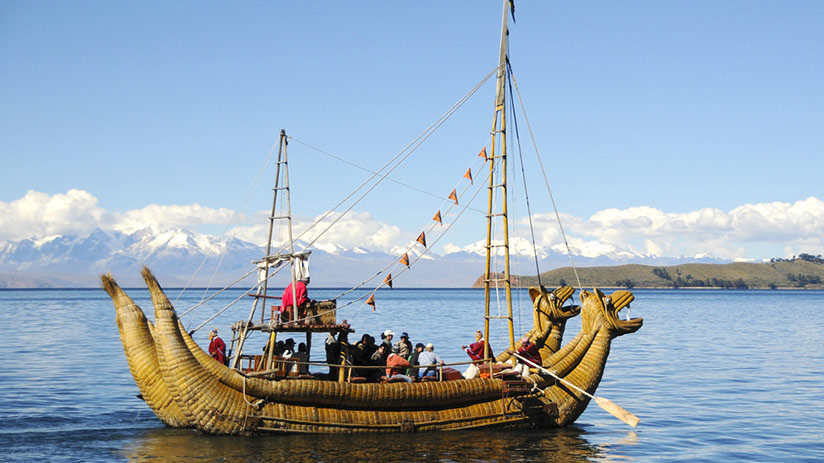
The Lake is home to numerous legends and stories. But many times reality is stranger than fiction, and this destination seems to be an example of this. There are numerous questions about the floating islands of Uros, but there is a particular mystery that many people want to figure out: how were the floating islands of Lake Titicaca built?
All begins by tying roots of Totora reeds until obtaining a solid and light base as the first layer. The Totora reeds are floating at the lake at harvest time (during the rainy season, between November and March) and only men can catch them. Of course, they select the best roots, since those stained with earth can sink very easily.
Over the first roots layer, many layers of totora reeds are piled up until obtaining solid stability. After, they anchor the island by driving eucalyptus stakes attached to ropes into the bottom of the lake.
Uros Islands in the constant maintenance
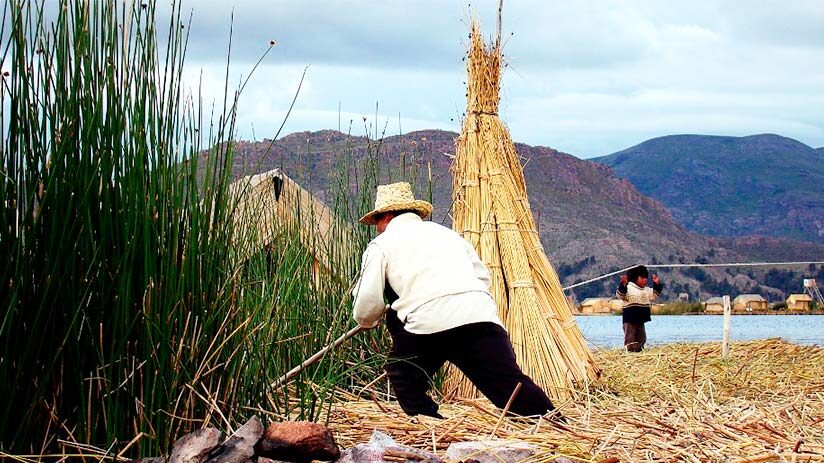
A well-made island can last up to 30 years. However, the Totora reed occasionally disintegrates at the bottom of Lake Titicaca, so the inhabitants (again, mostly men) have to maintain the islands. In the rainy season, it can be added a layer of Totora reeds once a week. On the other hand, in the dry season, it can be added a layer of Totora once a month. Therefore, the ingenuity of the Uros culture was what kept them alive to this day. Even the furniture in their homes is made from this cane.
Besides, their boats are in the shape of a canoe, but with animal head decorations on the prow. These usually have two figures of pumas in front, to honor the favorite animal of Lake Titicaca (Titicaca means puma stone in the Quechua language). Of course, the boats are used both for fishing and for taking visitors to the islands. In addition, like the islands, the boats are usually moored at the bottom of the Lake. But they can be moved if necessary. For all these reasons, the islands are considered one of the most famous landmarks in Peru.
How to get to the Uros
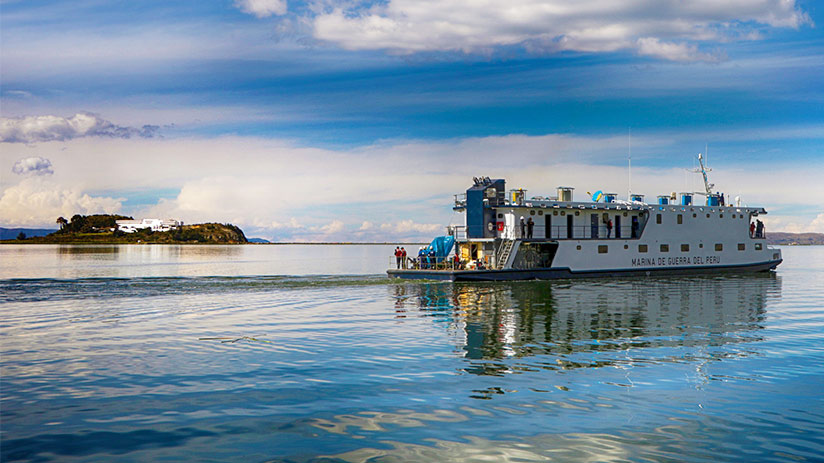
To get to the Lake and its floating islands there are several ways; although the most common route for most travelers is to visit first Machu Picchu and then Puno and the Lake. For this reason, most likely, you will arrive in Peru through Lima’s international airport. From there, you can choose to get to know previously some interesting Peruvian cities or travel directly to Puno. For the last option, you can opt for a flight to Juliaca (The closest city to Puno, since Puno, doesn’t have an airport), or a bus trip directly to Puno.
Of course, if you are traveling from Machu Picchu to Lake Titicaca, you can take a luxurious train from Cusco. The Andean Explorer train by Peru Rail is quite luxurious and scenic, with all the amenities you could wish for. Once you arrive in Puno, you will be able to enjoy everything that the Lake and the city have to offer. As we mentioned earlier, Puno is the gateway to Lake Titicaca. So, we highly recommend exploring the city and enjoying the many things to do in Puno, before getting to the islands.
In conclusion, you could get there in the following ways:
1. Islands by plane
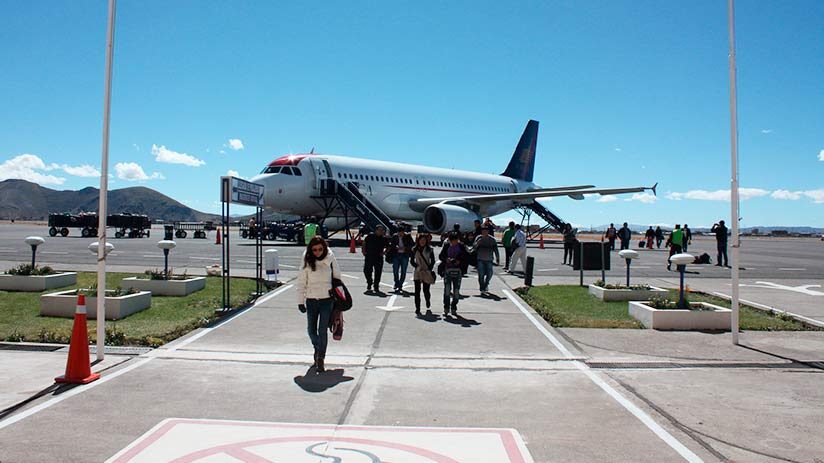
The closest airport to the city of Puno is located in the nearby city of Juliaca. The flight will take around 1 hour from Cusco and 1 hour and a half from Lima. Happily, there are many frequencies of flights from Lima and almost 2 frequencies per day from Cusco. Once you get there, you have to take a taxi to get to Puno. This road trip will also last around 1 hour more. Once arrive in Puno, you will have to take a boat at the Puno port to go to the islands. Happily, there are boat tours that depart from the port from 7 to 8 am every day, the boat trip to the floating islands lasts 20 minutes and the visiting through them lasts 02 hours approx.
2. Uros Islands by train
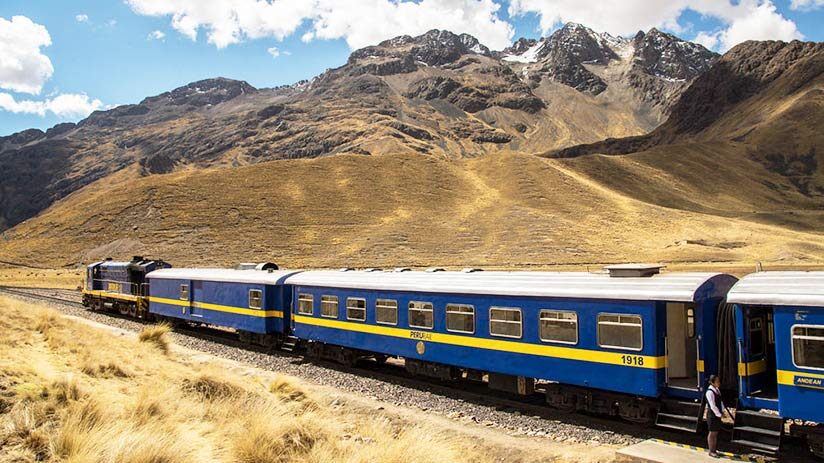
The Andean Explorer train by Peru Rail from Cusco heading to Titicaca Lake is a luxury service that is made up of a bar train car, 2 restaurant cars, and one observation car at the rear. In style with the old and luxurious British Pullman trains of the 1920s, this service offers an incredible show with traditional Peruvian singers and dancers. Besides that, the impressive landscapes that you will be able to see will make this tour head to Puno an unforgettable experience.
The journey is estimated to take around 10 hours and only has a 10-minute stop. Therefore, being able to enjoy a train trip with the different tours in Peru is an unforgettable and magical experience. Once arrived there, the process to take a boat and go to the islands of the Uros is the same, these depart from Puno port from 07 to 8 am, every day, the tour boat lasts 20 minutes to get to the floating islands and 02 hours more to navigate through all the islands.
3. Uros Islands by bus
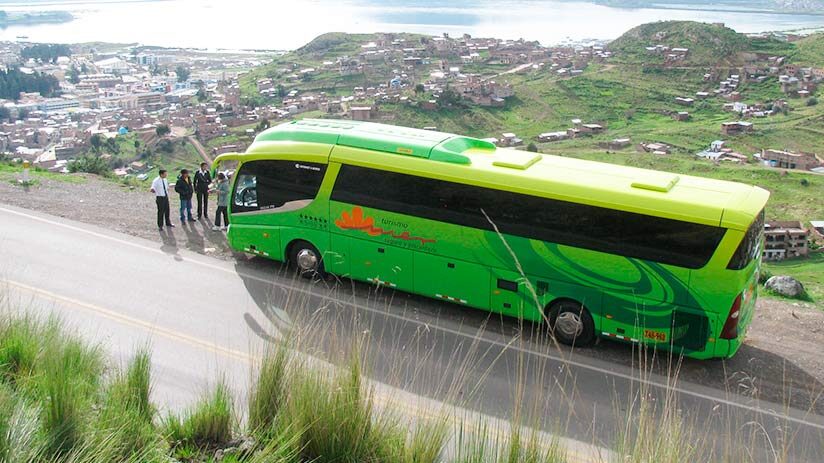
This is the most popular way to get to Puno and see the floating islands of Lake Titicaca because there are many frequencies of buses departing not only from Cusco or Lima, but if from other Peruvian cities like Arequipa, Tacna, Ayacucho, and Ica, among others.
In the case of Cusco, the trip takes about 10 hours and has some extended cultural stops, some of them at 2 known temples like Raqchi and La Raya. Also, the tourist bus stops for lunch (it is included in the ticket price) in a quiet place. Definitely, the best bus route begins from Cusco. Dare to arrange one!
The Uros islands tours
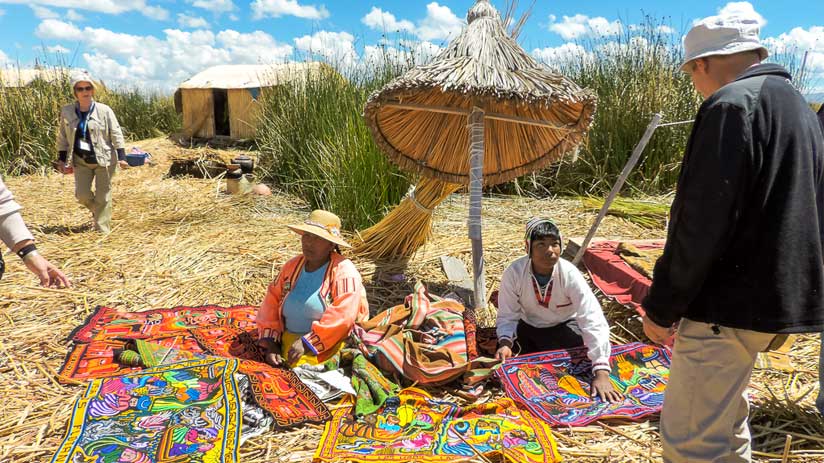
The tour to the floating islands of Uros is one of the most popular in the area. Although it is possible to visit the floating islands of Uros independently, what you will save is practically nothing. Therefore, to make the most of your time it is advisable to enjoy an organized tour. Upon arriving on one of the islands, locals often introduce themselves and greet tourists, meanwhile, your Lake Titicaca travel guide will show you around the islets and explain to you part of its history and traditions. Besides, during the tour, you can choose to try on some of the traditional outfits of the inhabitants. And for a small additional fee, you can take a ride to other floating islands on a reed boat!
There are even some tours oriented toward experiential tourism. Also, on these, you can enjoy one or two nights together with a local family, living in a room of a local house. Of course, in advance, you will know that hot water, internet signal, and limited access to electricity will be precious goods and values during your stay there. In this sense, you will be able to learn in-depth about the customs and traditions that shape the culture of Uros.
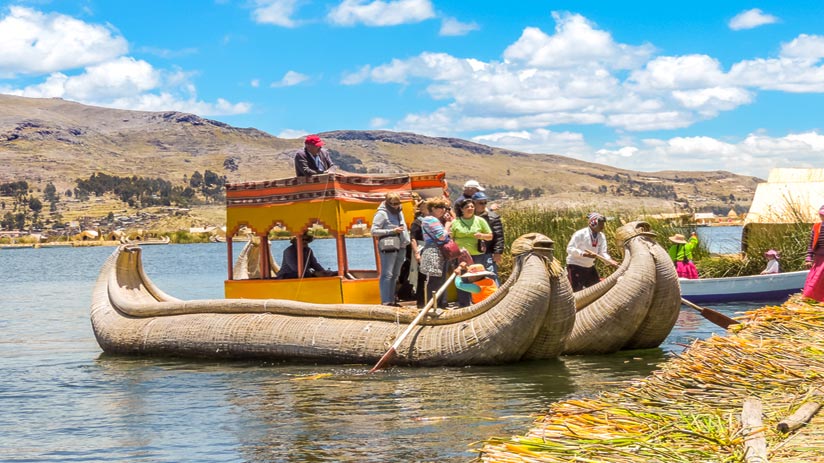
Usually, the Uros floating islands tours last half-day and can be combined with visits to other islands like Sillustani or Taquile. The last two are mainland islands located more to the east side of the lake and had their inhabitants conserve their own traditions and singular costumes, must-sees on your tour to the floating islands of the Uros.
“KNOWLEDGE IS AN ISLAND SURROUNDED BY A SEA OF MYSTERY”
As you will see, the magical destination of Lake Titicaca has much more to offer than just scenic views. The floating islands of the Uros are just one example of everything you can enjoy like its traditions that you will be able to know will make you marvel at everything there is to know. Take advantage of the wonderful tours and get to know in-depth the cradle of the Inca Empire. We hope together with the travel experts of Machu Travel Peru to have solved your doubts. If you want to know more about our wonderful private tours, you can consult with our qualified team of advisers. They will be happy to help you fulfill your vacations in Peru.
